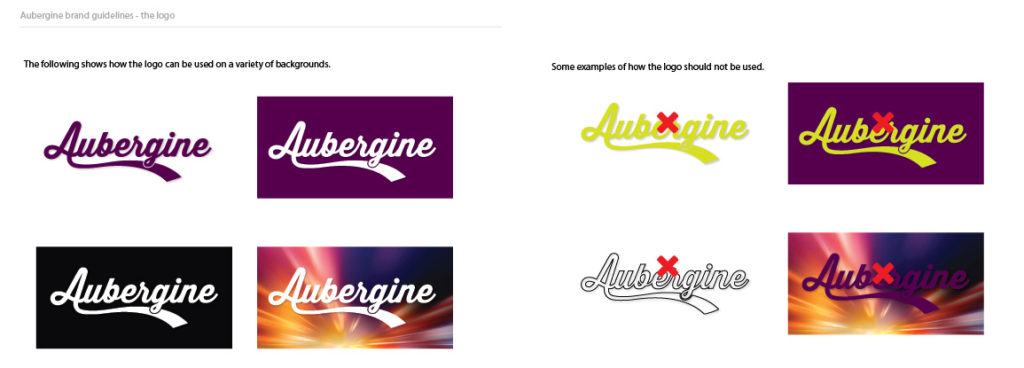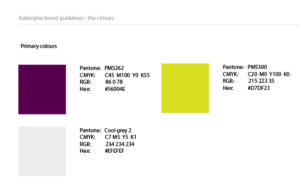Why your business needs brand guidelines
Why your business needs brand guidelines.
Brand guidelines are just for big business, right? No, absolutely not.
They tell your customers and staff how you work and the quality of your product or service.
Whether a sole trader or a multi-national, a brand guidelines document isn’t just about how the logo should look on TV or a large billboard. It’s about setting out some basic principles of how you would like your business’s image to be seen by others.
Consistency is the key, here.
We’ve all seen it where people’s logos get stretched to fit a space, get shown in a crazy colour or appear next to fonts that, well, just shout ‘I’ve been designed using MS Word’ rather than by a competent designer’.
What this says to the viewer is that you don’t really care too much about the outward image of the company or business and however it appears will do.
This correlates directly to how people perceive the way you work and quality of your product or service.
Shoddy is the word, here.
A simple set of rules (guidelines) is the best way to get started. It does not need to be a great tome that talks about minimum and maximum font sizes, line height and leading and what spacing distances the logo should be from other creative assets. That can come in time as you learn about how to best use your brand.
The reason for this is simple. Whether a large or small business, it may not always be you who needs to put a document or marketing piece together. The person doing it needs to know how they should be presenting it. Now, obviously when it comes to your graphic designer, whether they are the ones who created the logo and brand style originally or not, they are the ones in time who will be adhering to these guidelines.
It makes sure that every piece of communication, whether customer-facing or to your staff has a unified and clear message and a consistent tone of voice.
However, it’s worth noting that some of the worst examples of when a brand guidelines should have been used are where people in the organisation have ‘whizzed together’ a quick presentation document or something that is to represent the company and they’ve used the logo (squashed to fit the space because they aren’t designers and don’t have the skill or correct software to do it properly), 97 different fonts (including Comic Sans, which is a punishable offence) and 15 colours (because they thought they looked nice and made the presentation ‘pop’. Again, punishable).
We’ve all seen these sorts of documents. Is that really how you want your brand used? No, of course not.
So, let’s start.
7 things your brand guidelines must have as a minimum.
- An overview of your brand’s history, vision, personality and key values.
- Brand message or business mission statement – including examples of ‘tone of voice’.
- Logo usage – where and how to use your logo including minimum sizes, spacing and what not to do with it.
- Colour palette – showing your colour palettes with CMYK (for print), RGB/Hex (for web) and Pantone (for colour accuracy).
- Fonts – showing the specific font(s) that you use and how they are to be used, including the weight and versions.
- Image & photography – examples of image style and photographs that best represent your brand. Always make sure you have the licence to use the images and buy them from a reputable image library.
- Design examples – examples of how the logo, font and colours are typically used for standard company documents – a letterhead and business card is a good example as it uses colours, logos, fonts and spacing.

As time goes on, you may choose to go with a more detailed brand guidelines that includes:
- Design layouts and grids for brochures, leaflets and other marketing collateral
- Social media page graphics
- Website or email messaging layout examples
- Signage
- Advertising and how the brand is used with specific campaign messages; we say this with that tone, we don’t say that with this tone.
- Merchandising applications
- Copywriting style – the tone of voice. Who is it that narrates your marketing and audibly represents you brand and how do they talk?
 Brand guidelines should be flexible enough for graphic and web designers, as well as copywriters and marketeers, to be creative but keep them within set and controllable boundaries to maintain the brand principles.
Brand guidelines should be flexible enough for graphic and web designers, as well as copywriters and marketeers, to be creative but keep them within set and controllable boundaries to maintain the brand principles.
Consistency is key, especially when you are marketing or promoting across lots of different platforms. It is telling your customers and staff how you work and the quality of your product or service.
If you would like to talk to Aubergine about your brand and whether it needs guidelines or, if you have some, whether they are right for you, please call me on 01525 373020 for a free, no obligation chat. I will be happy to provide an assessment of your branding and what your guidelines should contain.

